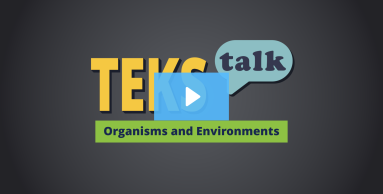
Knowledge and Skills Statement
Organisms and environments. The student knows that organisms undergo similar life processes and have structures and behaviors that help them survive within their environments.
Supporting Information
Research
Sinoradzki, Kristen, and TJ McKenna. “What’s so Phenomenal About Animals? Using Structure and Function to Explore Animal Diversity.” Science and Children 58, no. 6 (July/August 2021):86–90. https://www.jstor.org/stable/27133336.
Summary: This article explains that allowing students to explore animal diversity and the different structures that allow them to survive can help increase student engagement. Discussions about this topic can help promote a broader vocabulary.
